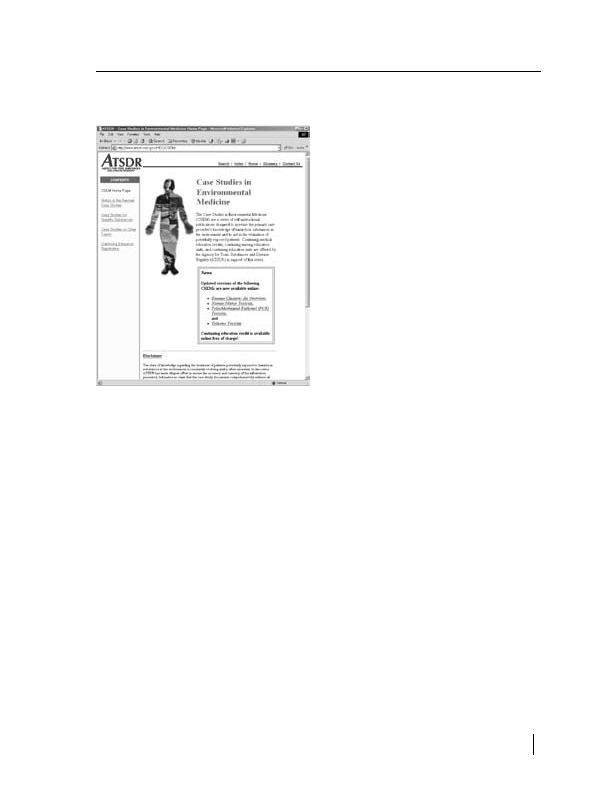
changes to promote and protect health, and (3)
to more effectively prevent exposure to hazard-
ous substances.
The program was broadcast live on September
12, 2002, via satellite to more than 450 satellite
downlink sites throughout the United States,
Puerto Rico, and the Virgin Islands. Following
the program, more than 1,000 health education
planning kits were mailed to registered par-
ticipants. The program received many positive
reviews, and ATSDR has received numerous
requests for videotapes. Requests for additional
resources and materials continue to be received
even eight months after the program aired.
This complex project required substantial and
lengthy preparation by all team members, along
with effective collaboration among a wide range
of specialists, including community workers in
New York, a cultural competency expert from
ATSDR provides Web-based training to health
Seattle, City University of New York: Hunter
professionals through its Case Studies in
College faculty, Rutgers University faculty and
Environmental Medicine web page
staff, an Emory University physician and educa-
tor, tribal representatives, and many others.
Distance Learning Program
Capacity Building Through Public
ATSDR, working with CDC's Public Health
Practice Program Office, developed a Public
Health Training Centers
Health Training Network Course entitled
In fiscal year 2002, ATSDR awarded funds to
"Working with Communities for Environmental
the Health Resources Services Administration's
Health." The program, broadcast live, was
(HRSA) public health training centers to permit
viewable as a downlink broadcast, as a "live"
inclusion of information about environmental
Webcast, and as a delayedviewing archived
health nursing in HRSA's training activities.
program. The program was aimed at an audi-
HRSA's public health training center program
ence of health educators, public health and
is designed to improve the nation's public
environmental health professionals, state and
health system by strengthening the technical,
local health agency personnel, nurses and nurse
scientific, managerial, and leadership skills
practitioners, health care providers, school
and abilities of current and future public health
health personnel, teachers, and academic
professionals. ATSDR partnered with HRSA to
specialists in public health or environmental
include an environmental health component in
science. The purpose of the program was (1) to
its nursing training programs. Using ATSDR
raise awareness of environmental health infor-
materials and various approaches directed
mation and resources, (2) to increase capacity
toward the nursing workforce, the HRSA train-
among individuals and communities to make
ing centers reached approximately 5,500 health
informed decisions and appropriate behavior
chapter 4 55


 Previous Page
Previous Page
